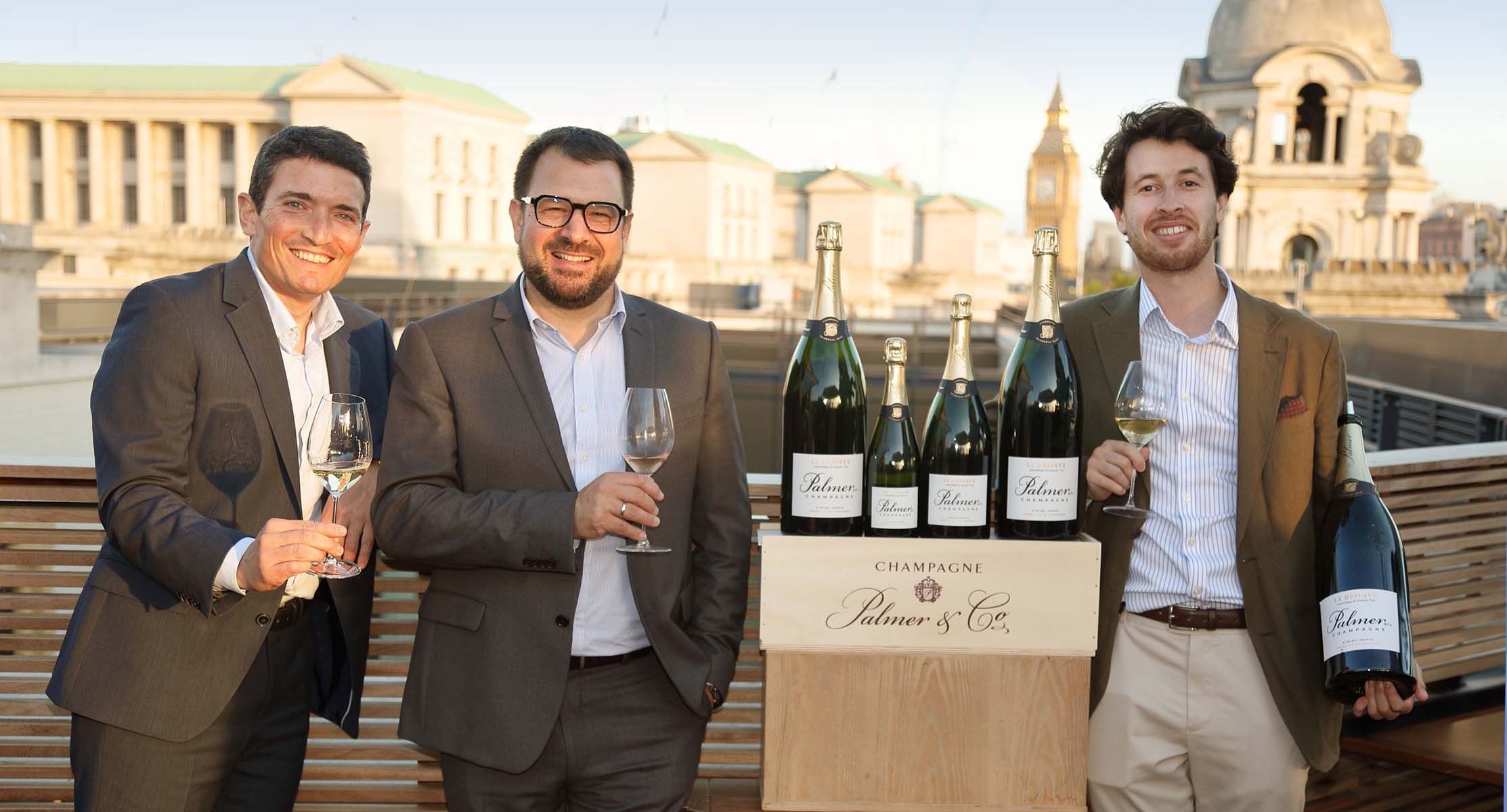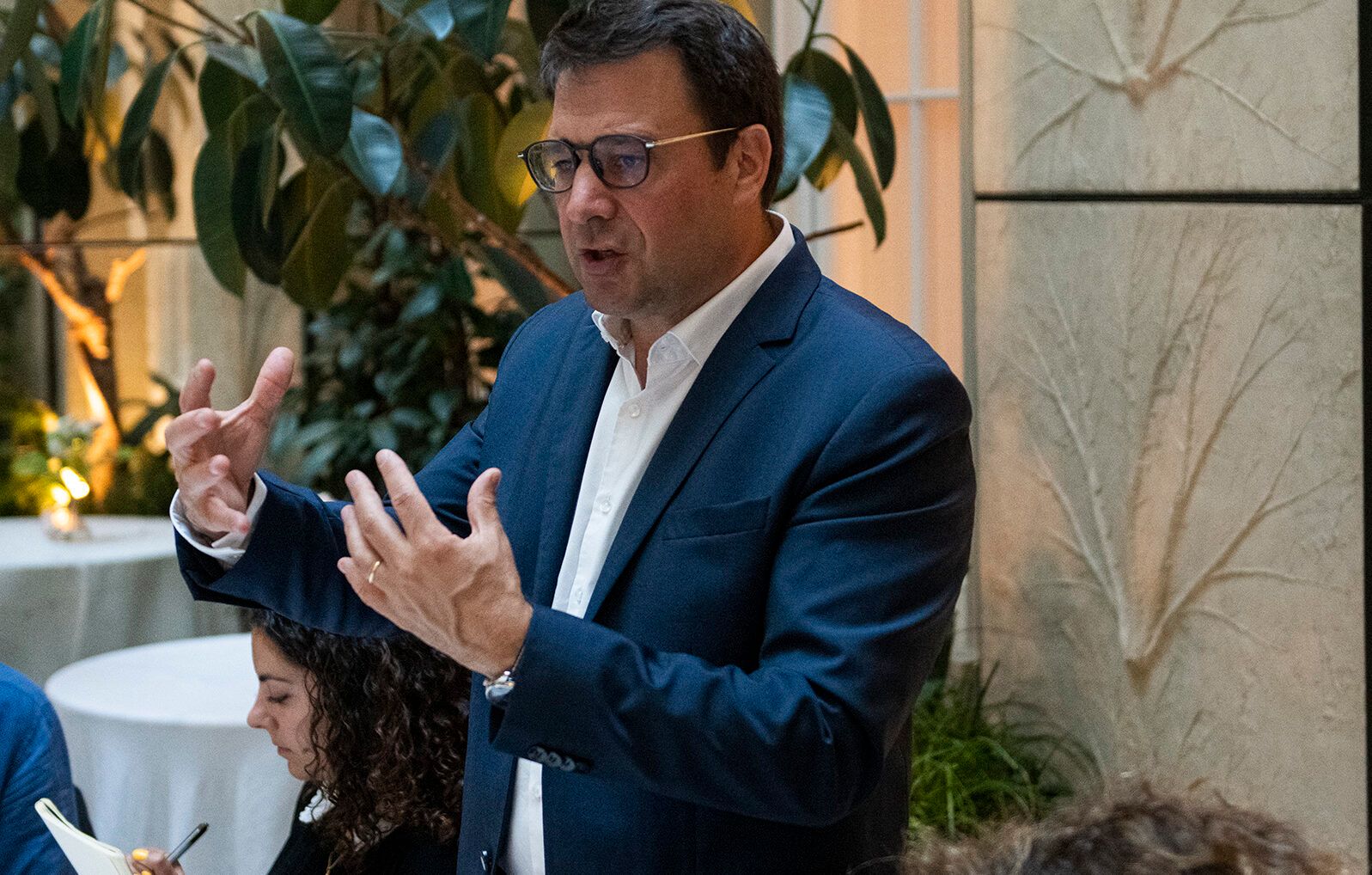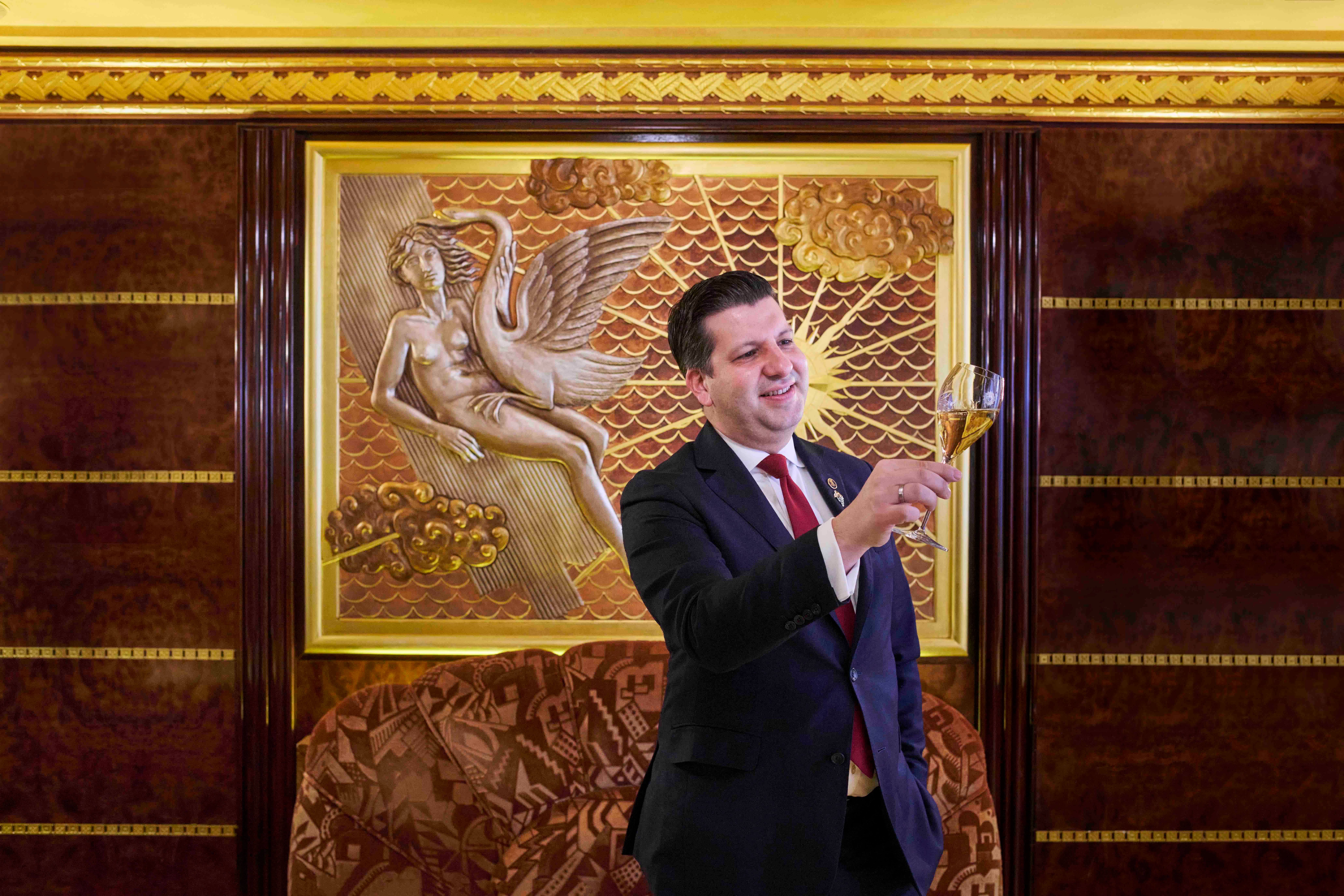On the rooftop terrace of London’s grandly refurbished Old War Office hotel, Merlin Ramos, head sommelier at the venue’s smart restaurant, Kioku by Endo, pours from a special contraption designed for jeroboams. With its blend of tradition and innovation, OWO is an entirely appropriate place to launch Champagne Palmer & Co.’s latest offering, its first zero-dosage champagne.
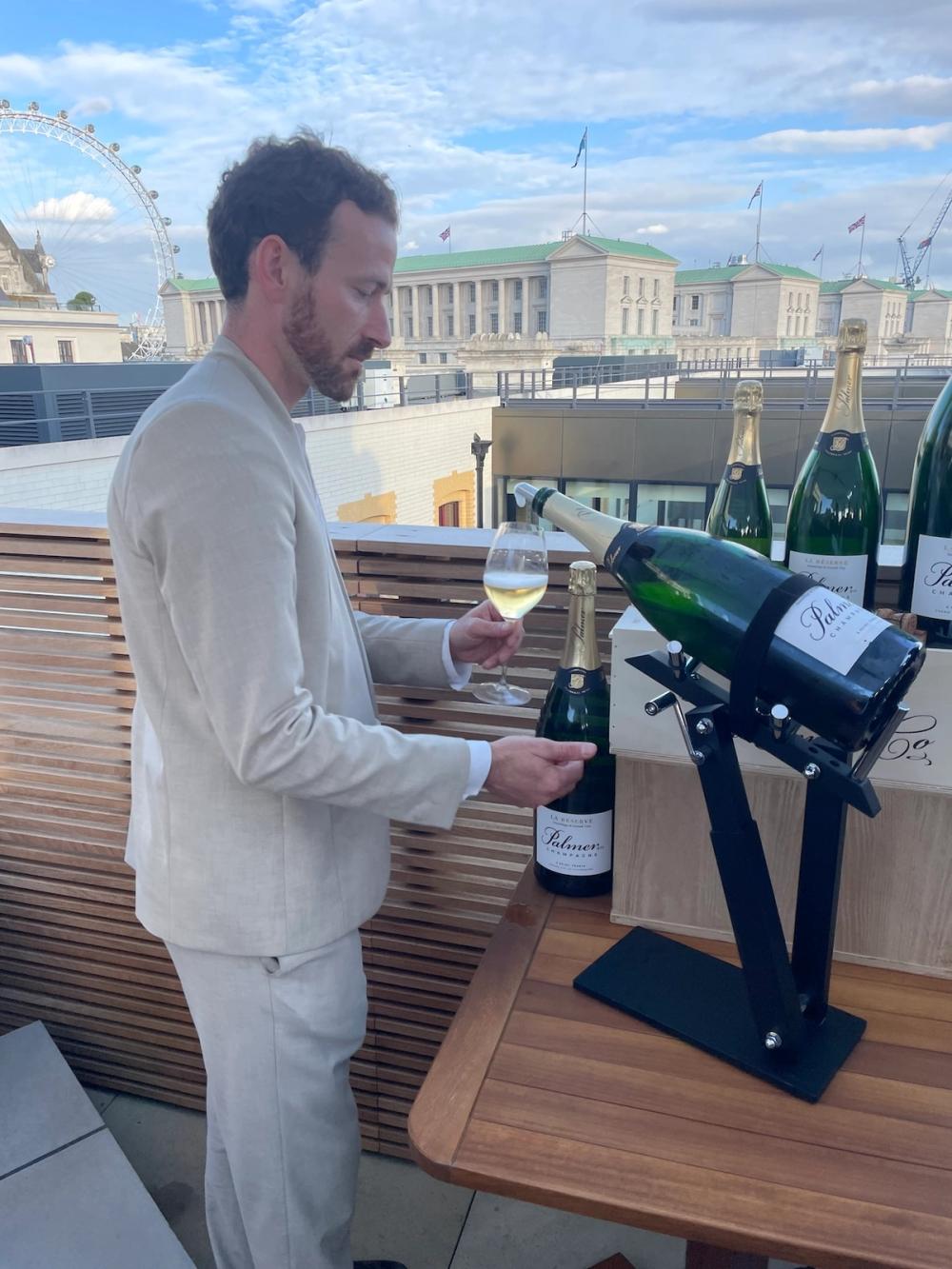
Merlin Ramos gets to grips with the jeroboam at the La Réserve Brut Nature launch
Palmer was founded in 1947. It now boasts 300 growers as cooperative members and is rooted in the Montagne de Reims plateau of Champagne with more than 200 hectares of vineyards classified as premier and grand crus. It is very much focused on the on-trade, although it does have a deal with UK supermarket Marks and Spencer.
La Réserve (12% abv, £46 rrp) is very much the house’s staple product. A Chardonnay, Pinot Noir and Meunier blend, this is aged for a not inconsiderable three to four years on the lees. There’s a high proportion of 40%+ reserve wines. The wine which constitutes the reserve wine in La Réserve is the finished cuvée from the previous year. So, in what Palmer calls “the spirit of a perpetual reserve”, in each bottle there is a chain of older vintages. The dosage is 6.9 g/l.
When I wrote up a Palmer champagne launch two years ago, I said that with a production of one million bottles a year it seemed happy to fly below the radar. That may be about to change. Its commercial people now talk about going for maybe two million bottles a year, which would put them on a par with the likes of Billecart-Salmon and Pol Roger.
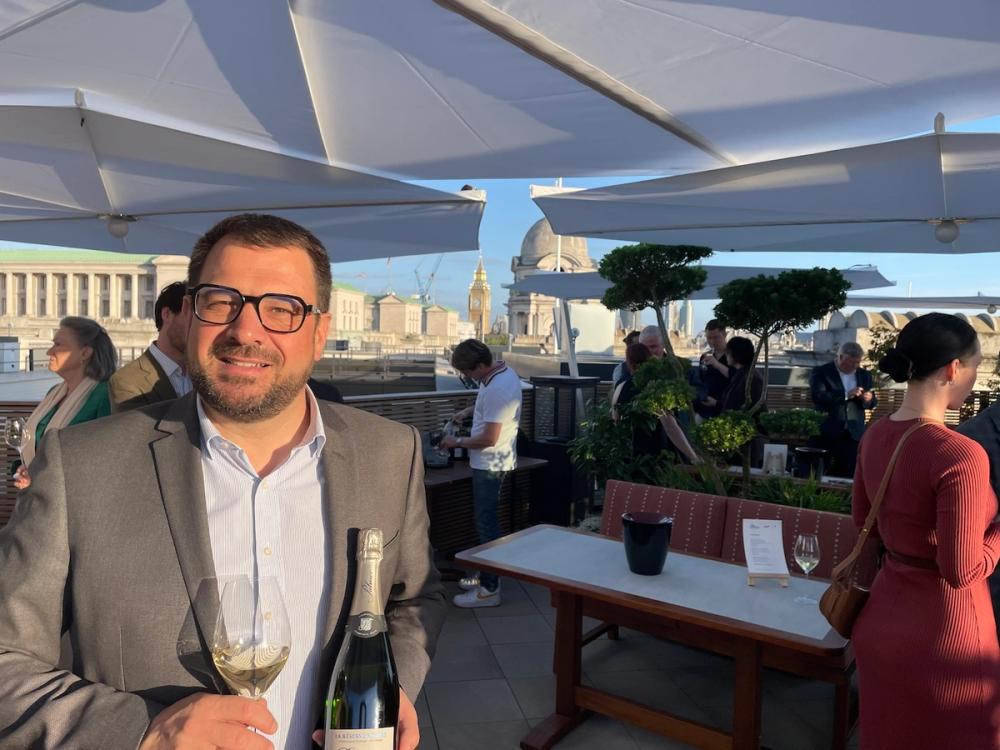
Champagne Palmer&Co's CEO Rémi Vervier
But we are here with Palmer’s CEO Rémi Vervier, who is also one of this cooperative’s oenologists, to try out the new La Réserve Nature (12% abv, £56 rrp). Vervier explains the aim was to create an intense, pure wine that would extend La Réserve towards a more mature palate while preserving the energy and balance.
“Initially, the idea behind La Réserve Nature had nothing to do with creating a wine with less sugar, but rather with more time and more flavours,” Vervier says.
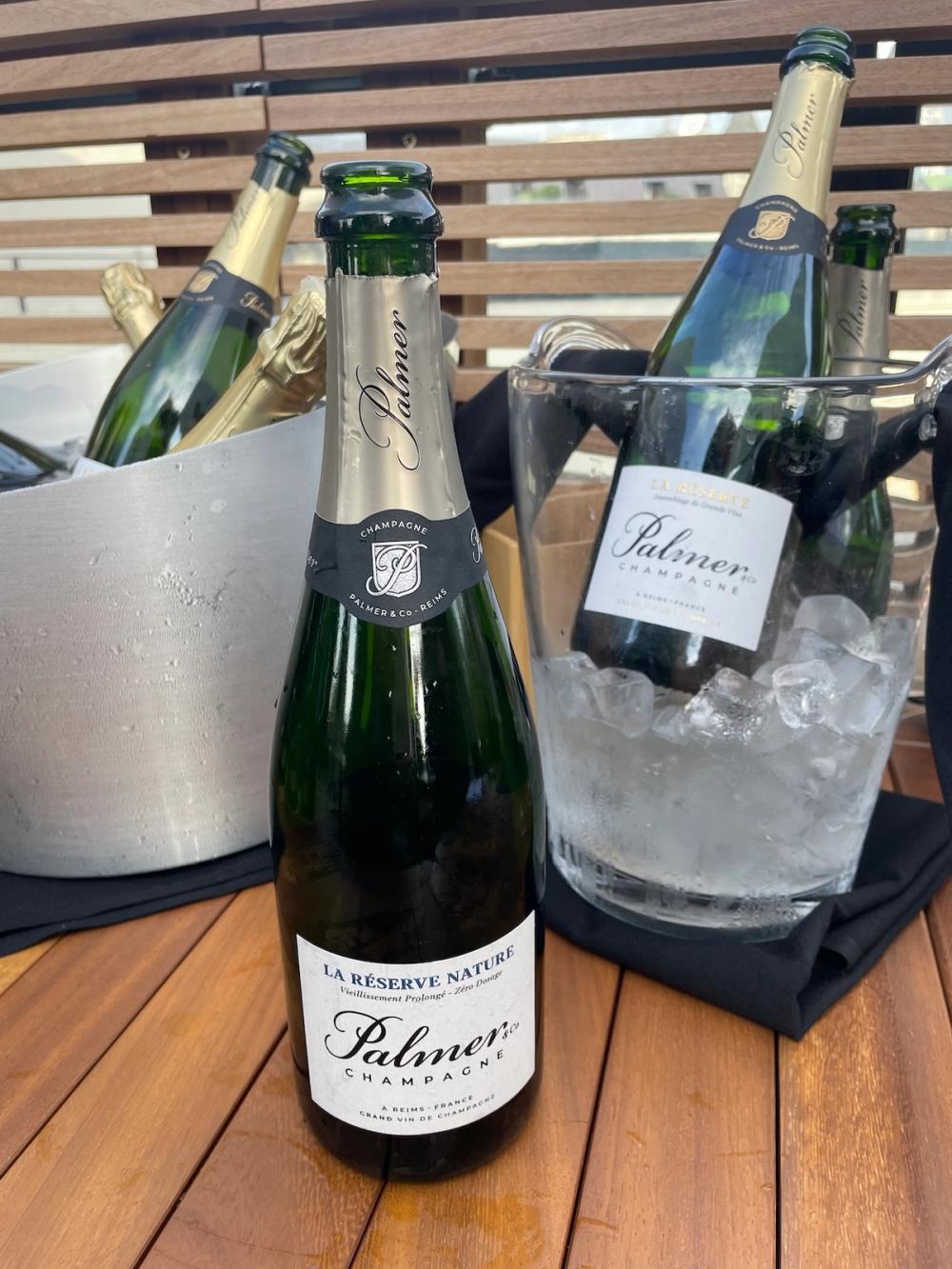
As with La Réserve, the zero-dosage is Chardonnay 50-55%, Pinot Noir 30-35% and Meunier 20-25%. But it goes one better than La Réserve on ageing with six years on the lees.There are notes of citrus fruit, brioche and toasted almonds. It is precise and clean with a decent mineral tension, and a saline finish. The idea is that the absence of dosage highlights the excellence of the terroirs of the Montagne de Reims.
The zero-dosage is also up against the Palmer Rosé (12% abv, £59 rrp) with a dosage of around 6g/l which has an appealing freshness and spiciness. In the US this already represents 15% of sales. It will always outsell the Brut Nature which Palmer recognises is something more for the cognoscenti.
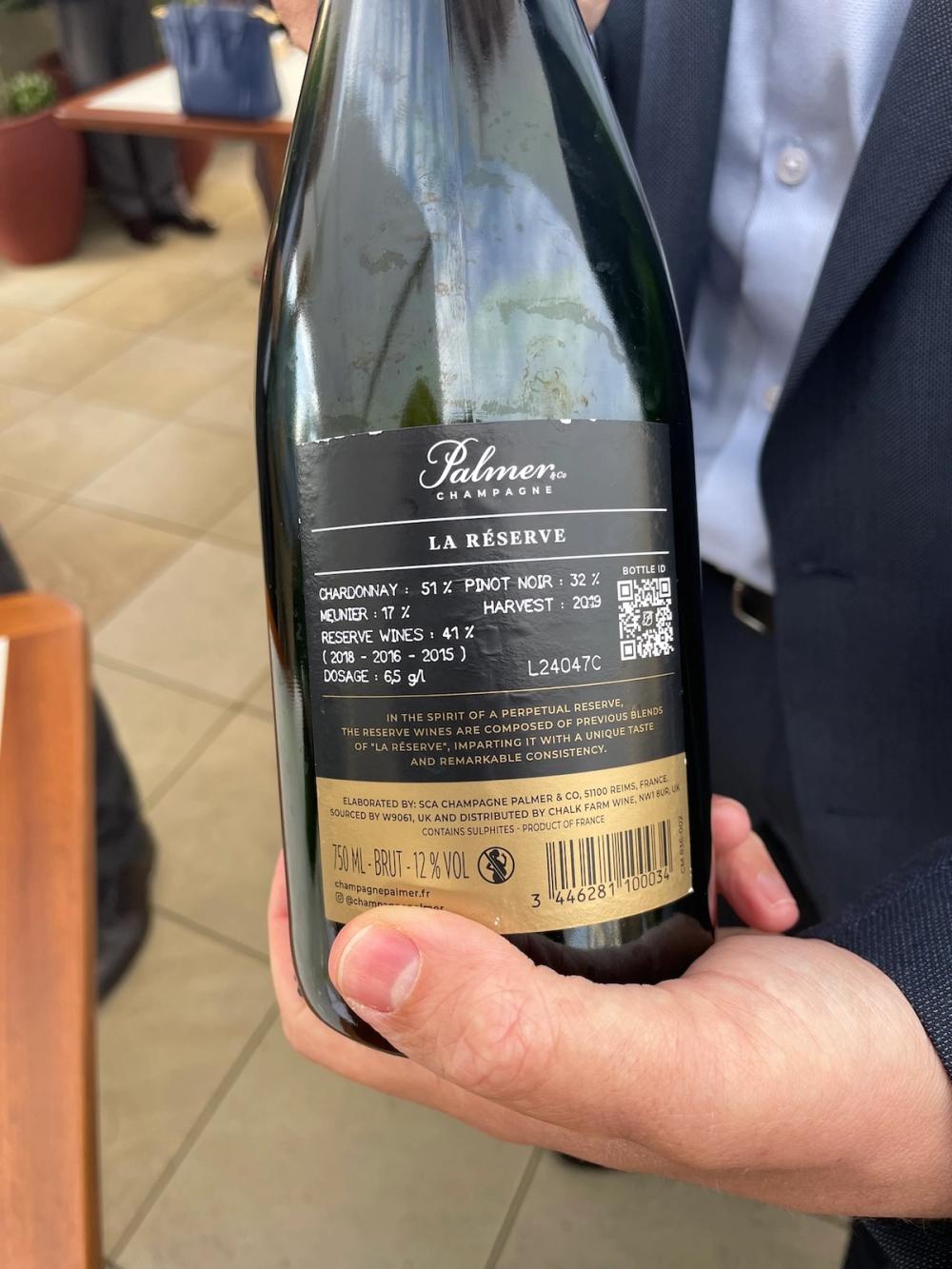
All the info if you want it
Palmer is also keen to show us its updated labels. This front one spotlights the large proportion of reserve wine in its cuvée. And the back describes in detail the grape blend the proportion of reserve wines, and the dosage. This sort of transparency is clearly great at keeping the producer transparent and satisfying us when we channel our inner champagne geek.

